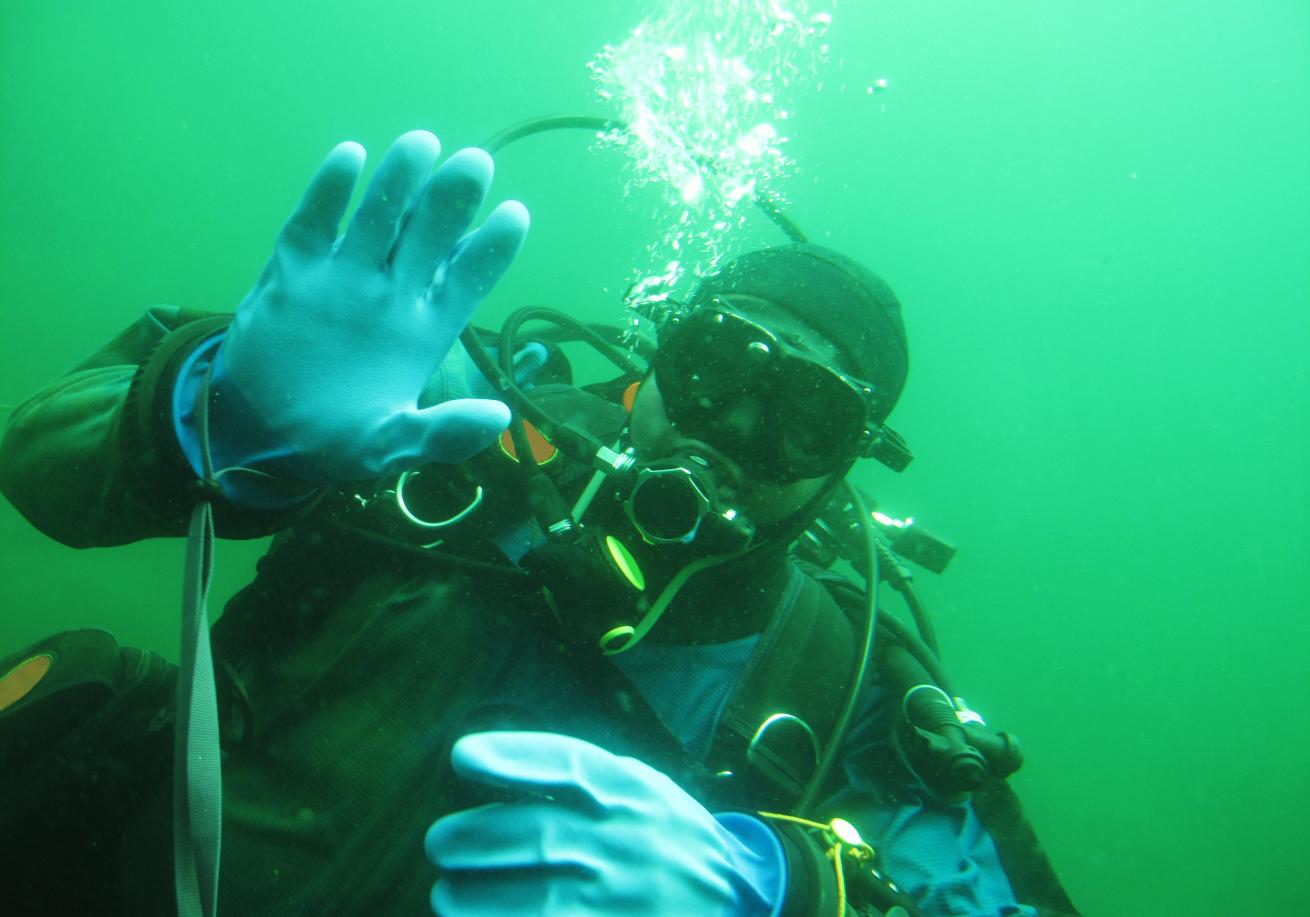Dive Training: Seven Tips for Diving in Low Viz

Seven tips for diving in low viz.
Shutterstock
Learning to be comfortable in low viz will increase the range of sites where you can enjoy diving. Try these seven tips:
1. Understand what’s missing. Most aspects of the low-viz dive site are similar to other sites you’ve dived — water density, buoyancy characteristics, depth — the only thing that’s changed substantially is the amount of light that’s being absorbed (refracted/reflected) by particles suspended in the water.
2. Line it up. An anchor line from your dive boat is absolutely the best way to descend (and ascend) on low-viz dives. Once you reach agreed-upon depth, consider playing out a high-visibility line from a wreck reel connected to the anchor line.
3. Slow down. It’s smart to slow down in all respects while diving in such conditions — even more than normally.
4. Relax and acclimatize. Allow your eyes and body to relax and acclimate to the new conditions. This will help you begin to absorb all of the signals your senses gather.
5. Depend on other senses. Once we lose the majority of our sight underwater, it’s amazing how we can begin to sense even tiny changes in water movement against our skin, or differences in sound — things we may have ignored when our eyes gave us more data.
6. Bring a dive light. Depending on how soupy things are, you may benefit from additional light in some situations.
7. Plan your strategy. Depending on how poor the viz is, you may not be able to use hand signals. Consider sound signals, such as tapping on your tank, or using your dive light to generate “flash” signals. Agree on the plan for meeting up if you get separated, especially if it’s going to be different than standard operating procedure.

ShutterstockSeven tips for diving in low viz.
Learning to be comfortable in low viz will increase the range of sites where you can enjoy diving. Try these seven tips:
1. Understand what’s missing. Most aspects of the low-viz dive site are similar to other sites you’ve dived — water density, buoyancy characteristics, depth — the only thing that’s changed substantially is the amount of light that’s being absorbed (refracted/reflected) by particles suspended in the water.
2. Line it up. An anchor line from your dive boat is absolutely the best way to descend (and ascend) on low-viz dives. Once you reach agreed-upon depth, consider playing out a high-visibility line from a wreck reel connected to the anchor line.
3. Slow down. It’s smart to slow down in all respects while diving in such conditions — even more than normally.
4. Relax and acclimatize. Allow your eyes and body to relax and acclimate to the new conditions. This will help you begin to absorb all of the signals your senses gather.
5. Depend on other senses. Once we lose the majority of our sight underwater, it’s amazing how we can begin to sense even tiny changes in water movement against our skin, or differences in sound — things we may have ignored when our eyes gave us more data.
6. Bring a dive light. Depending on how soupy things are, you may benefit from additional light in some situations.
7. Plan your strategy. Depending on how poor the viz is, you may not be able to use hand signals. Consider sound signals, such as tapping on your tank, or using your dive light to generate “flash” signals. Agree on the plan for meeting up if you get separated, especially if it’s going to be different than standard operating procedure.










